Dolsot Bibimbap Recipe with Secret Gochujang Sauce
Have you ever wondered why dolsot bibimbap (돌솥 비빔밥) at Korean restaurants tastes so much better than regular bibimbap? The secret lies in that sizzling hot stone bowl that creates the most incredible crispy rice crust at the bottom, what we call 누룽지 Nurungji (누룽지)
Having grown up eating this dish all the time in Korea, the sound of rice crackling in a hot dolsot bowl instantly transports me back to family dinners and special celebrations. The way the bowl keeps everything hot while creating that perfect golden crust is pure magic.
Today, I’m sharing my authentic dolsot bibimbap recipe, which recreates the same restaurant-quality taste you’d find at the best Korean restaurants in Seoul. This isn’t just any bibimbap; it’s the version that made this dish famous worldwide. It comes with my secret gochujang sauce, which all Korean restaurants use but rarely share.
Whether you have a traditional dolsot or need to use an alternative, this recipe will provide the perfect balance of textures and flavours that make dolsot bibimbap so irresistible. Crispy rice, tender vegetables, perfectly seasoned meat and a rich, spicy-sweet sauce that all come together in harmony.
Ready to bring the authentic Korean taste to your kitchen? Let’s create some food magic together!
Table of Contents
What is Dolsot? 돌솥
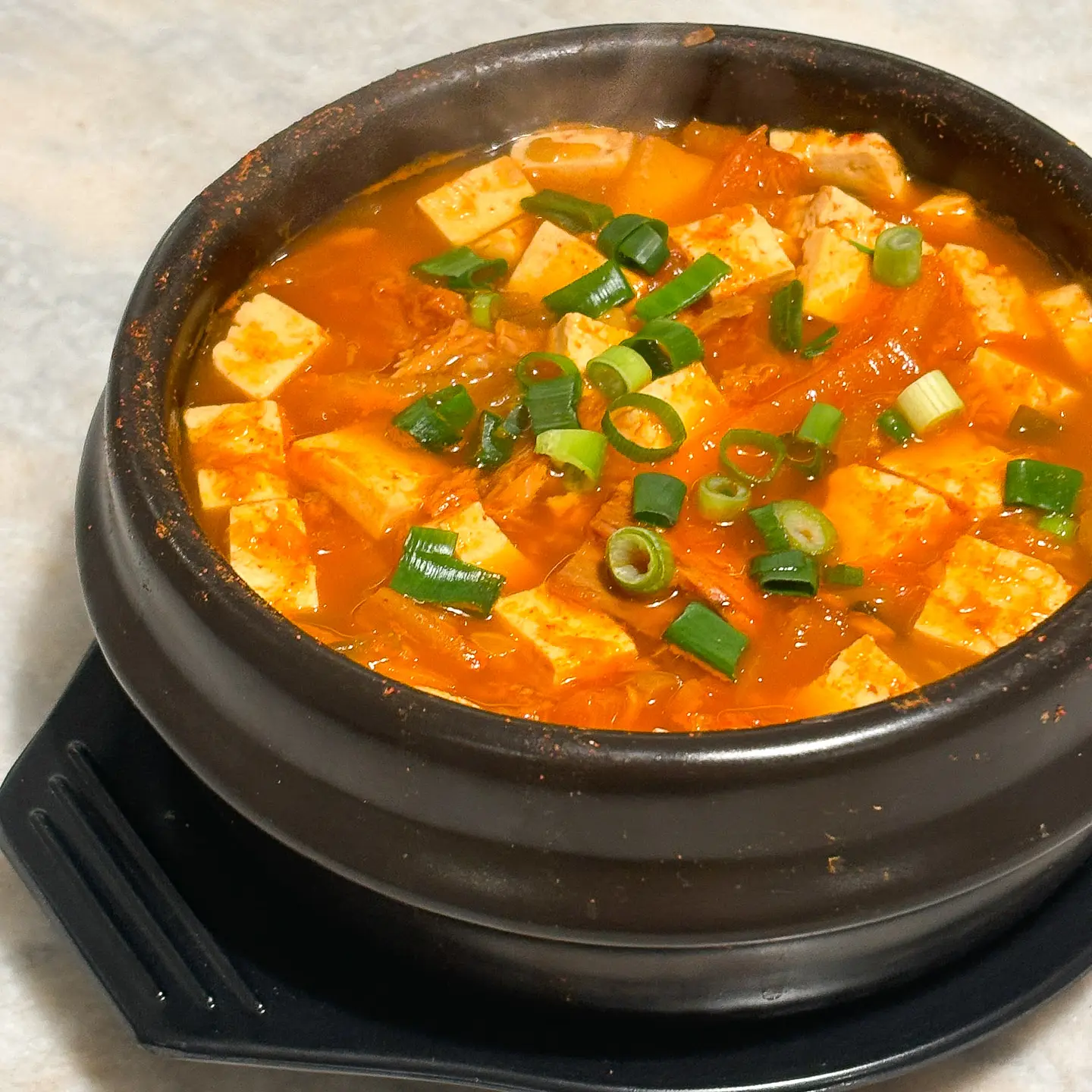
Many people might think that the photo above is dolsot (돌솥), but actually it is a ttukbaegi (뚝배기). It seems that both dolsot and ttukbaegi are often called “dolsot” outside of Korea.
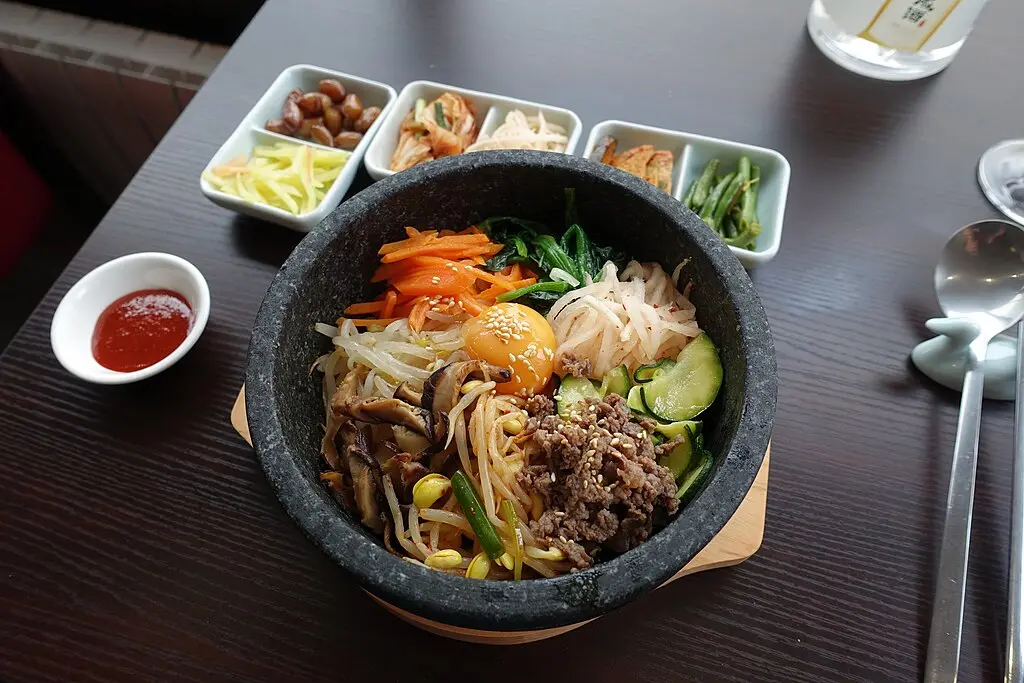
The photo above is a picture of a dolsot. So now what exatly is a dolsot? As the name suggests, a dolsot (돌솥) is a pot made of stone. And what about a Ttukbaegi? A Ttukbaegi is an earthenware pot made by baking clay.
A dolsot keeps food warm for a long time and produces crispy nurungji 누룽지 (burnt rice) at the bottom. In Korea, when you order dolsot bibimbap, it is always served in a dolsot, never in a ttukbaegi.
On the other hand, ttukbaegi is mainly used for soups, stews, and braised dishes. It retains heat well and keeps food warm for a long time.
Authentic Tuna Kimchi Jjigae (Kimchi Stew)
Here is a delicious tuna kimchi jjigae(kimchi stew) cooked in a ttukbaegi. Cooking it in a ttukbaegi keeps the stew warm throughout the meal, making it even better.
Should I Buy a Dolsot? (돌솥)
In countries like Belgium, where I moved to, as well as other European countries and the U.S., dolsot (Korean stone bowl) can be hard to find. Instead, you can use a more common ttukbaegi. While Korean restaurants typically use dolsot, many homes also use ttukbaegi as a more accessible alternative.
What is Bibimbap? 비빔밥
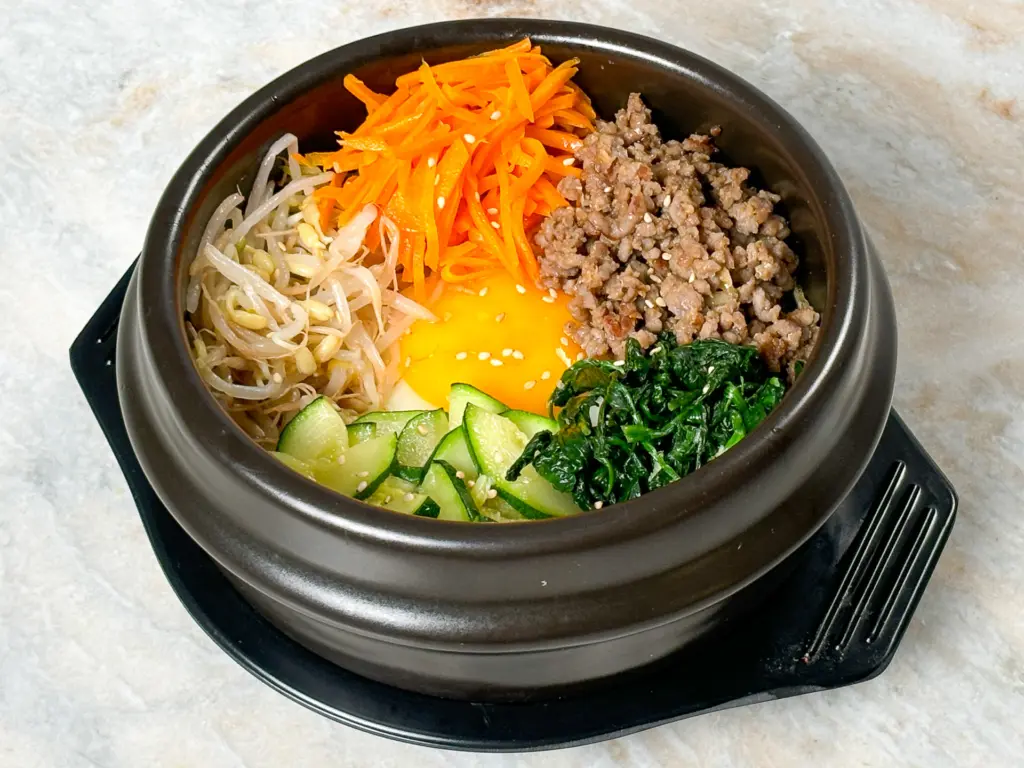
Bibimbap (비빔밥) actually means Korean mixed rice. Bibimbap is a dish in which rice is topped with meat and various vegetables and then mixed with seasonings. It is one of the most iconic Korean dishes. When a friend asks, “What is the tastiest Korean food?” There are too many to choose from, but bibimbap would definitely be in the top 5 of the tastiest Korean dishes.
The charm of bibimbap comes from the harmony of flavors created by the combination of different ingredients. The ingredients in bibimbap don’t have a fixed answer. Since everyone adds ingredients according to their own preferences, there can be tens of thousands of variations of bibimbap. The seasoning can also vary, from soy sauce-based to doenjang (fermented soybean paste), gochujang (Korean chili paste), or sesame oil-based sauces. The recipe I’m sharing today is the most classic one.
What is the difference between Dolsot Bibimbap and Bibimbap?
Dolsot bibimbap(돌솥 비빔밥) is served in a hot stone bowl, while regular bibimbap comes in a standard bowl. But the difference in flavor is significant. When dolsot bibimbap is served, you’ll immediately hear the sizzling sound of rice cooking. This is because the hot stone bowl crisps the rice, creating a delicious layer of Nurungji 누룽지 (burnt rice). This adds a nutty, toasty flavor to the dish and helps the ingredients blend beautifully with the heat. It also keeps the dish warm throughout the meal. Once you try Dolsot bibimbap, you may find regular bibimbap a bit underwhelming in comparison. I highly recommend trying it for yourself!
What is Korean bibimbap made of?
Bibimbap Has Evolved Differently by Region.
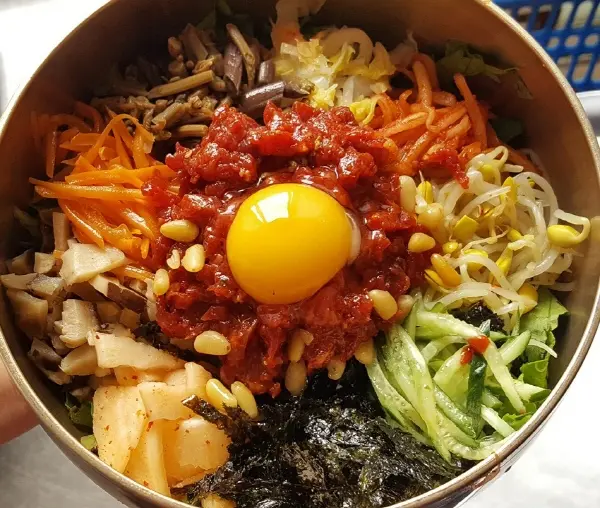
Bibimbap has evolved in different ways depending on the local specialties of each region. For example, there is Jeonju bibimbap with raw beef (yukhoe) and Tongyeong bibimbap with clams and seaweed (tot namul).
In addition to regional variations, the ingredients that people add to bibimbap can vary greatly from person to person. However, the most famous bibimbap recipe in the world is the one I’m going to share with you today.
This classic bibimbap recipe consists of soy sauce-marinated stir-fried meat, seasoned carrots, zucchini, bean sprouts, and spinach, all placed on top of rice. A fried egg is then added, followed by a drizzle of gochujang sauce and sesame oil before everything is mixed together.
Today, I’m going to show you how to make the secret gochujang sauce! In Korean households, people often just mix plain gochujang, but the gochujang you had in Korean restaurants probably tasted different. That’s because they make a special gochujang sauce separately. This secret gochujang sauce is incredibly easy to make, and it will taste just like the one you’ve had in Korean restaurants. I’m going to reveal the recipe for it today!
Do you put kimchi in bibimbap?
This can be divided into restaurant style and home style bibimbap. In most Korean restaurants in Korea, bibimbap does not include kimchi. It usually consists of vegetables, meat or fish, and egg. In Korean homes, however, it’s more common to mix leftover side dishes with rice. In such cases, kimchi is sometimes added to make bibimbap. Some people may make napa cabbage kimchi bibimbap, but I haven’t seen it often around me.
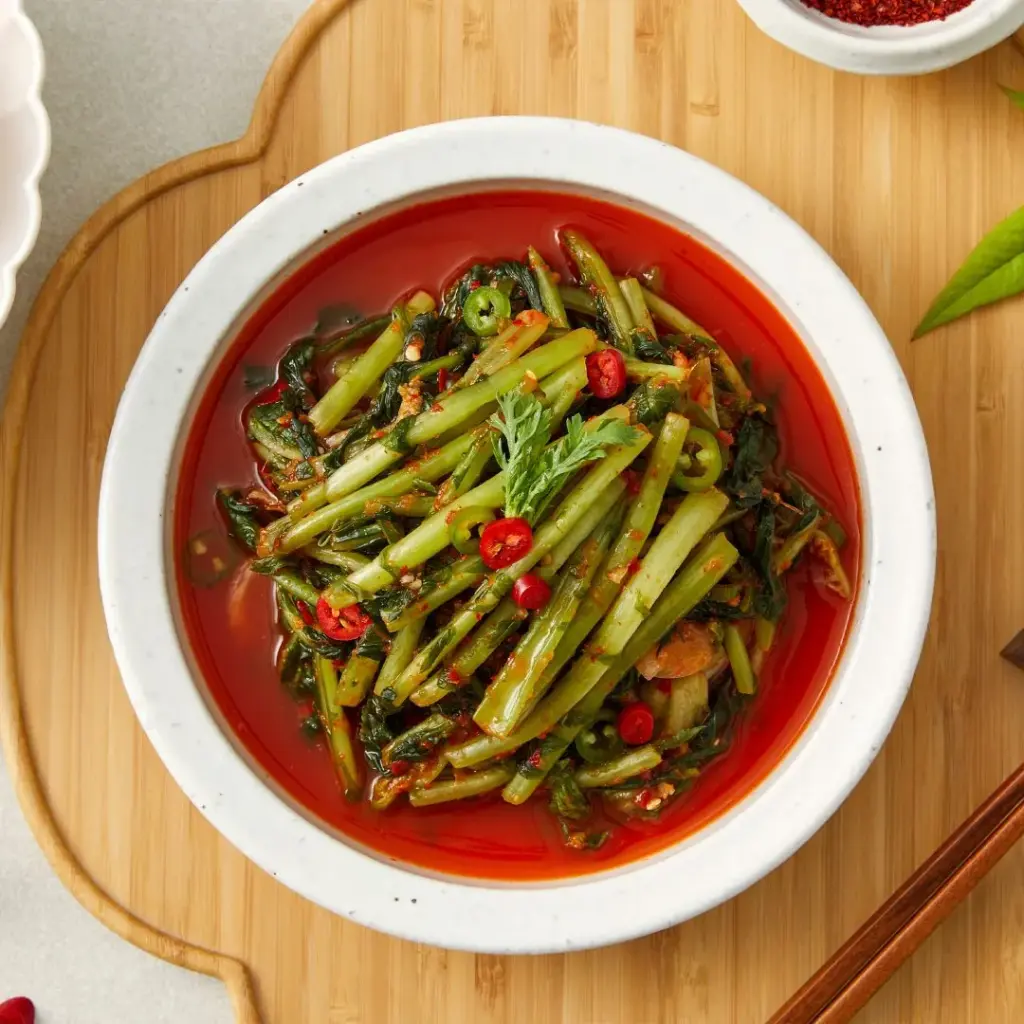
The most common kimchi bibimbap for Koreans is young radish kimchi bibimbap (yeolmu kimchi bibimbap 열무비빔밥). It’s easy to make and only requires young radish kimchi, gochujang, sesame oil, and an egg. Young radish kimchi is considered a summer kimchi, so young radish kimchi bibimbap is typically eaten in the summer. It is preferred on hot days because it doesn’t require a lot of ingredients to be cooked over a hot stove.
Why is Bibimbap Expensive?
The bibimbap that foreigners know is actually very fancy to Koreans. Usually, Koreans don’t make the kind of bibimbap at home that foreigners are used to. It’s possible to make it, but it’s not common to go through the long cooking process of boiling, stir-frying, seasoning, and topping rice with all that meat and lots of vegetables just to have bibimbap.
In my family, my mother never did it that way. In Korea, it’s more common to mix leftover side dishes (Banchan) with rice to make bibimbap. So it’s not uncommon to skip the meat altogether. Therefore, at home, bibimbap is simply mixing leftover side dishes (Banchan) with rice. It may sound unappealing, but the different flavors of each side dish blend together harmoniously to create a new and delicious taste every time.
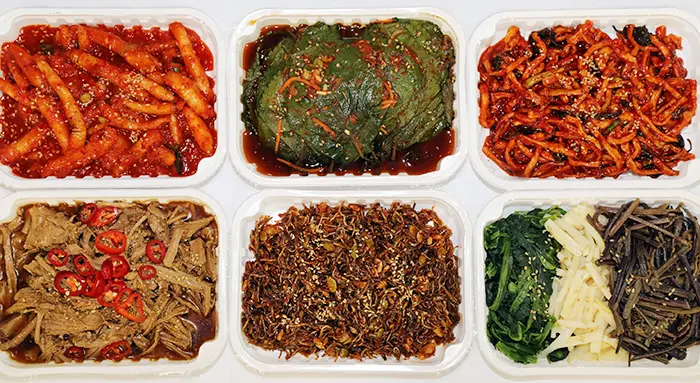
Now consider bibimbap at a Korean restaurant. The ingredients, such as seasoned meat, mushrooms, zucchini, carrots, bean sprouts, spinach, and more, are truly diverse. Each of these ingredients takes a long time to prepare. The taste is amazing, but as a Korean, when I want to have bibimbap at home, I just use whatever leftovers I have.
Is bibimbap healthy?
Bibimbap is a dish that combines various ingredients such as rice, vegetables, meat or fish, and eggs all in one. Unlike wheat, it uses unprocessed rice, which provides healthy, unrefined carbohydrates along with protein and vitamins. It’s a nutritious and balanced meal that allows you to get a variety of essential nutrients in one bite. In addition, the seasonings used, such as gochujang (Korean chili paste) and doenjang (fermented soybean paste), are known to have cancer-fighting properties.
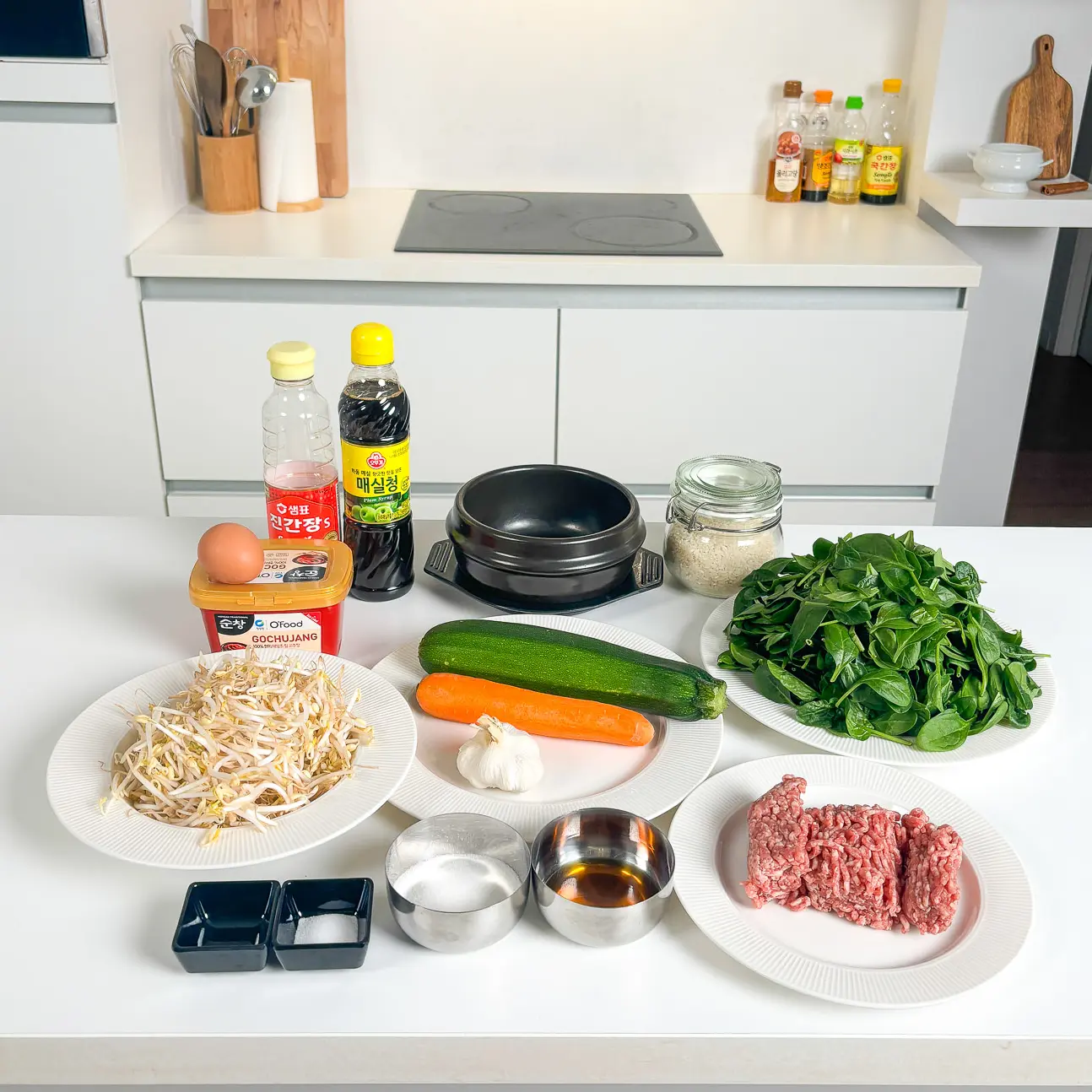
Calories in Dolsot Bibimbap?
The average calorie count for one serving of Dolsot Bibimbap is about 550 calories. However, depending on the ingredients and seasonings used, the calorie count can range from 400 to 900 calories. The recipe I prepared for you is 500 calories.
Why does bibimbap taste so good?
The ingredients in bibimbap are actually vegetable and meat side dishes to Koreans. These bibimbap ingredients are already seasoned as side dishes, so they taste great when eaten with rice. Each of these delicious side dishes has its own unique flavor and texture. For example, the crunchy bean sprouts, chewy mushrooms, and savory meat are already perfect in their own right. When these tasty ingredients are placed on rice and mixed with a delicious sauce, their different flavors, aromas, and textures come together harmoniously to create a new taste. Adding a drizzle of sesame or perilla oil at the end enhances the flavor. Aren’t you starting to drool?
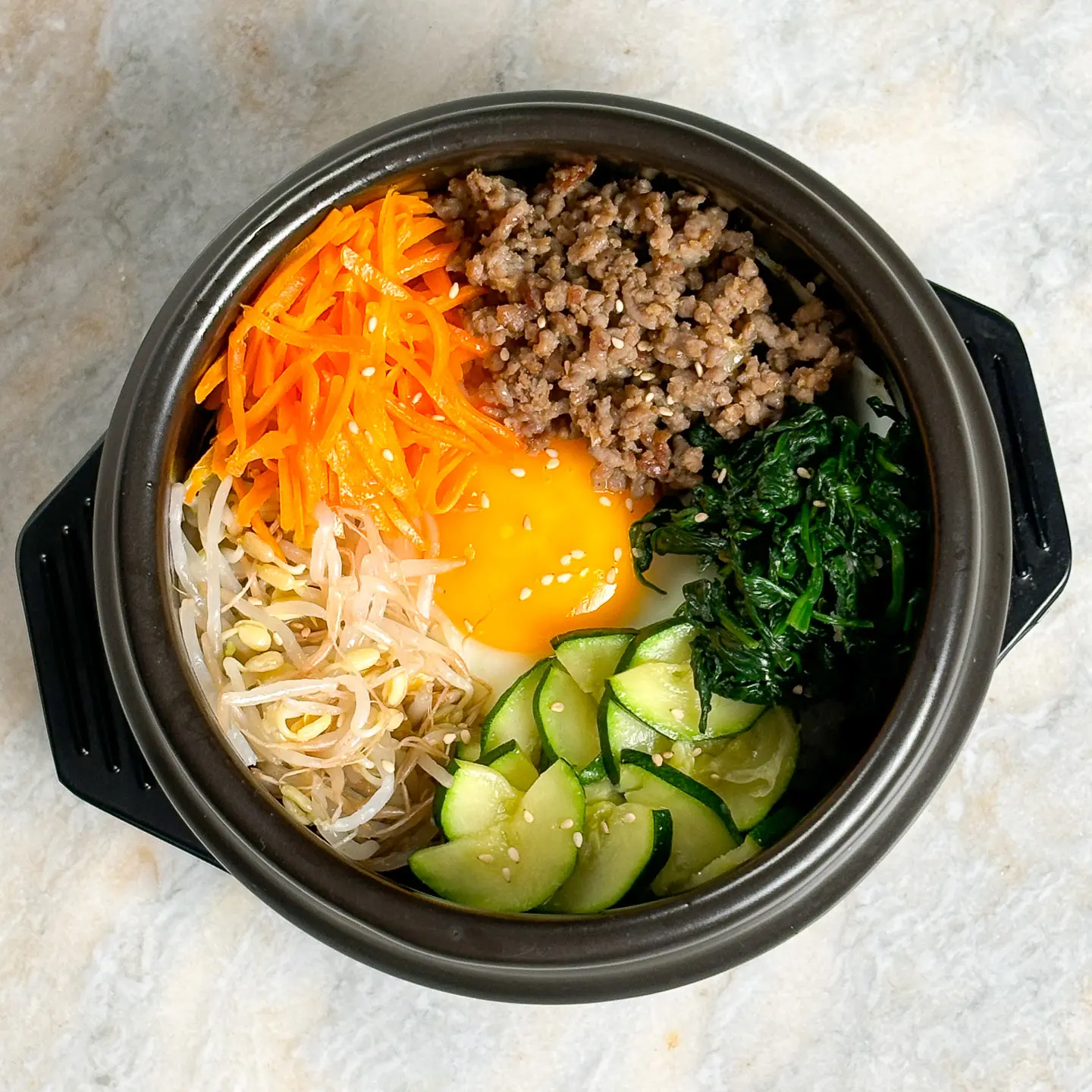
Restaurant-Quality Dolsot Bibimbap at Home.
The dolsot bibimbap(돌솥 비빔밥) I’m making today is an exact recreation of the dolsot bibimbap you would eat at a Korean restaurant in Korea. It’s so similar to the dolsot bibimbap I had at a high-end Korean restaurant that I can confidently call it the ‘best dolsot bibimbap’. The crispiness and nutty flavor that the dolsot creates, along with its warmth, offer a taste that is on a whole different level compared to regular bibimbap.
Watching the YouTube video will make it easier to follow the recipe. I will continue sharing authentic Korean food recipes to show the world the true, delicious flavors of Korea through ‘Blonde Kimchi 블론드김치’. Thanks!
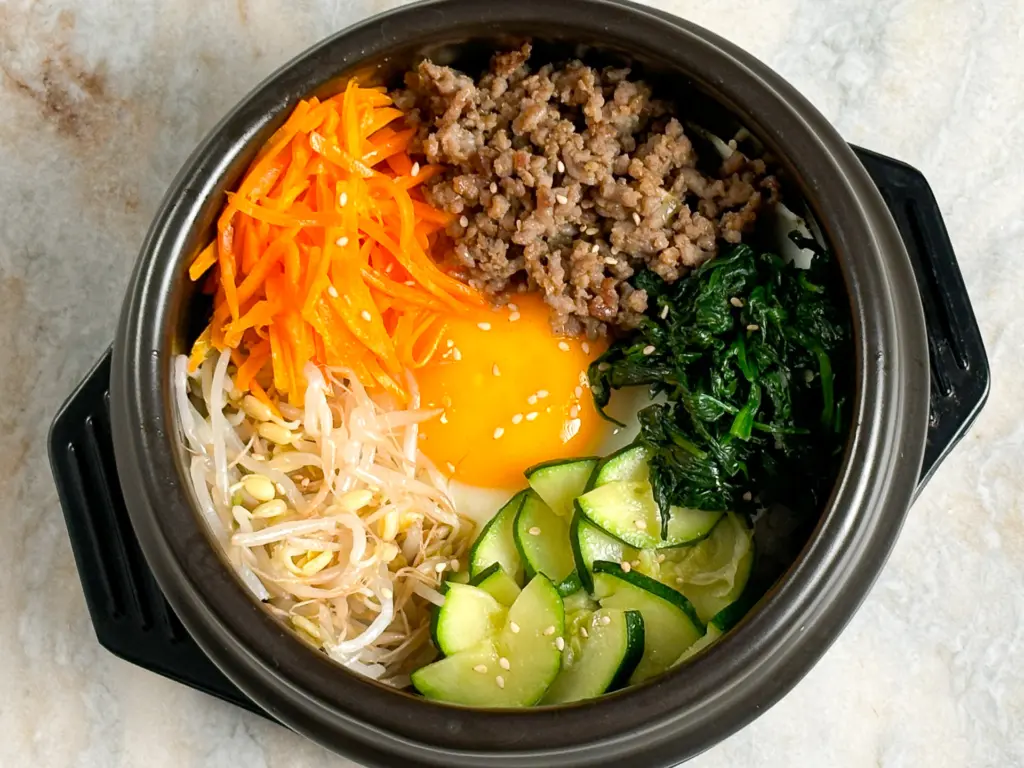
The Best Dolsot Bibimbap
Equipment

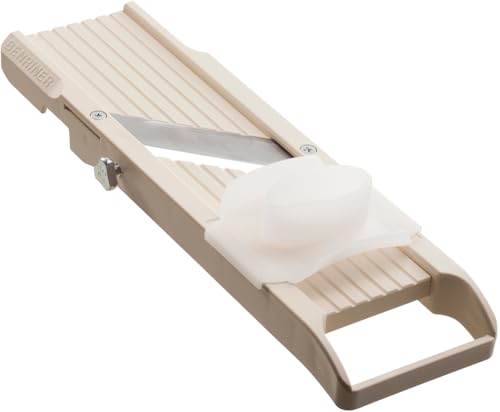


Ingredients
- 450 g spinach
- 1 head garlic
- 250 g soybean sprouts
- 1 carrot
- 1/2 zucchini
- 4 eggs
- 4 bowls rice
- 6 tbsp cooking oil
- 5 tbsp sesame oil
- 3 tbsp salt
- 250 g minced meat
Meat Seasoning
- 1/2 tbsp sugar
- 1 tbsp soy sauce (jin ganjang)
- 1 tbsp oyster sauce
- 1 tbsp minced garlic
- 1 tbsp matsul (Korean cooking Wine)
Secret Bibimbap Gochujang Sauce
- 4 tbsp gochujang
- 4 tbsp minced garlic Half the amount is fine if it's too strong for you
- 2 tbsp soy sauce
- 1 tbsp sugar
- 4 tbsp plum syrup If you don't have it, you can use Mulyeot (Corn Syrup) instead but then use less sugar.
Instructions
Ingredient Preparation
- Rinse the rice thoroughly and start cooking it in a rice cooker. Keep it warm until assembly.4 bowls rice
- Finely chop the garlic (about 10 cloves per head).1 head garlic
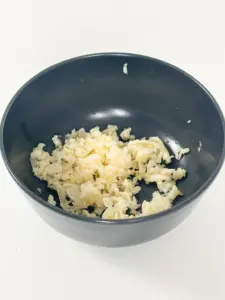
- Cut the carrot into thin julienne strips and slice the zucchini into half-moons about 0.5 cm thick.1/2 zucchini, 1 carrot
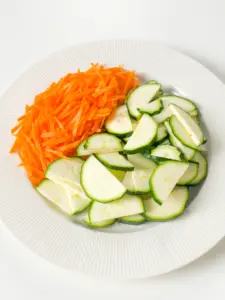
Cooking the Vegetables
- Bring a pot of water to a boil and add a pinch of salt. Blanch the spinach for 1 minute, then drain and gently squeeze out any extra water. For each serving, mix the spinach with 1/2 tablespoon minced garlic, a pinch of salt, and 1 tablespoon sesame oil. Toss everything together until well coated.450 g spinach
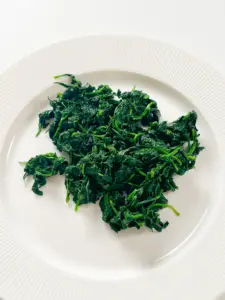
- Boil the soybean sprouts for 2 minutes, then drain and gently squeeze out any extra water. For each serving, mix the sprouts with 1/2 tablespoon minced garlic, a pinch of salt, and 1 tablespoon sesame oil. Mix well.250 g soybean sprouts
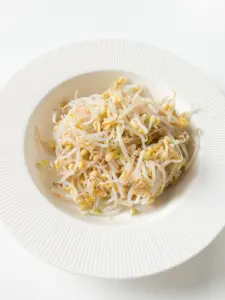
- Stir-fry the carrot in a pan with 2 tbsp cooking oil.
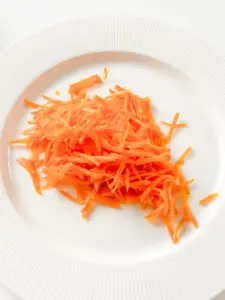
- Stir-fry the zucchini in a pan with 2 tbsp cooking oil, then add 1/2 tbsp minced garlic and a pinch of salt and continue stirring.
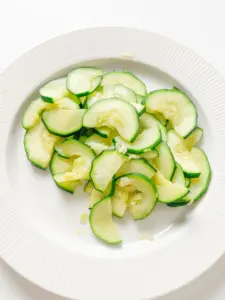
Cooking the Meat
- Mix sugar, soy sauce, oyster sauce, minced garlic, and cooking wine in a bowl to make the marinade. Add the minced meat, mix it well, and let it sit for at least 15 minutes to absorb all the flavors.1/2 tbsp sugar, 1 tbsp soy sauce, 1 tbsp oyster sauce, 1 tbsp minced garlic, 1 tbsp matsul, 250 g minced meat
- Stir-fry the seasoned meat until completely cooked, making sure there is no pink left.
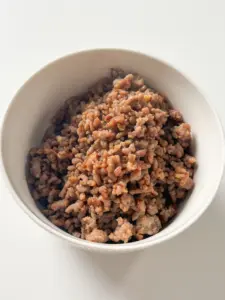
Topping Preparation
- Make my tasty Bibimbap Gochujang Sauce by mixing gochujang, minced garlic, soy sauce, sugar and plum syrup in a bowl.4 tbsp gochujang, 4 tbsp minced garlic, 2 tbsp soy sauce, 1 tbsp sugar, 4 tbsp plum syrup
- Heat some cooking oil in a pan and fry the egg just the way you like it. (sunny-side-up or softly cooked.)4 eggs
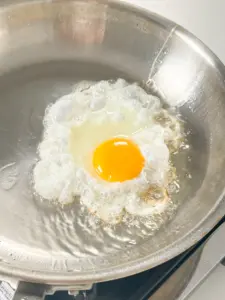
Assemble the Dolsot Bibimbap
- Coat each hot stone bowl (Dolsot) with a tablespoon of sesame oil, then place it on a heat source.
- When the stone bowl is slightly heated (about 3 minutes), spread the rice evenly in the bowl.
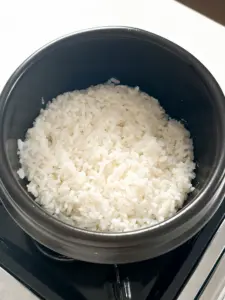
- Place the egg in the center of the rice and add 1.5 tbsp each of the spinach, bean sprouts, carrot, zucchini, and seasoned meat around it.
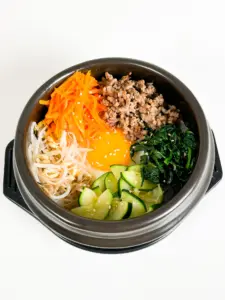
- Heat for about 5 more minutes so that the rice is crispy on the bottom (the process of creating a crust in the Dolsot).
Essential Finishing Touches
- Drizzle the Bibimbap Gochujang sauce on top, to taste, then drizzle with 1 tbsp of sesame oil.
- Mix well so that the vegetables, rice, and sauce are well combined.
- 잘 먹겠습니다!
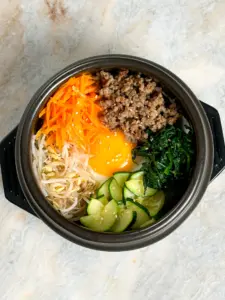

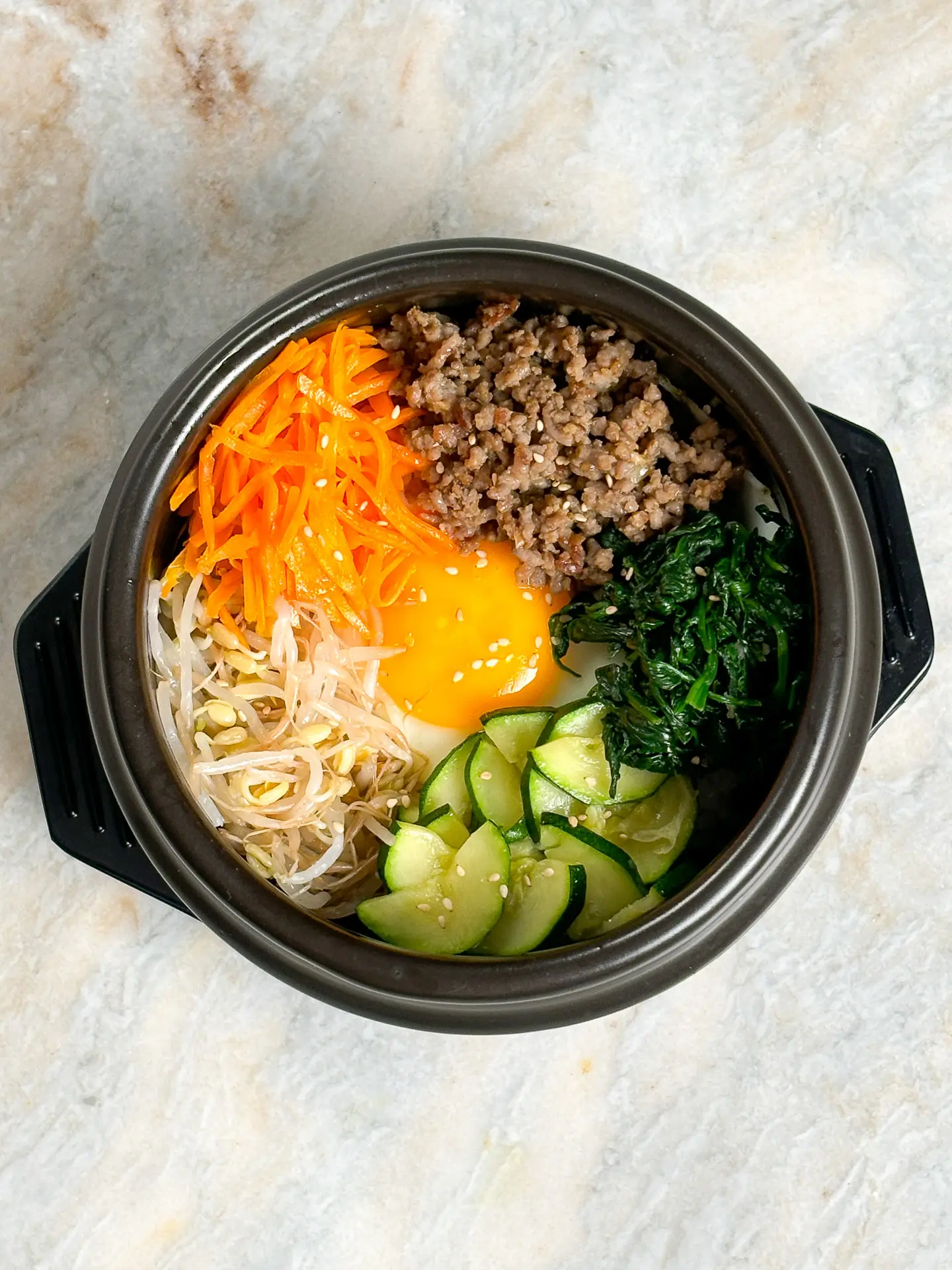
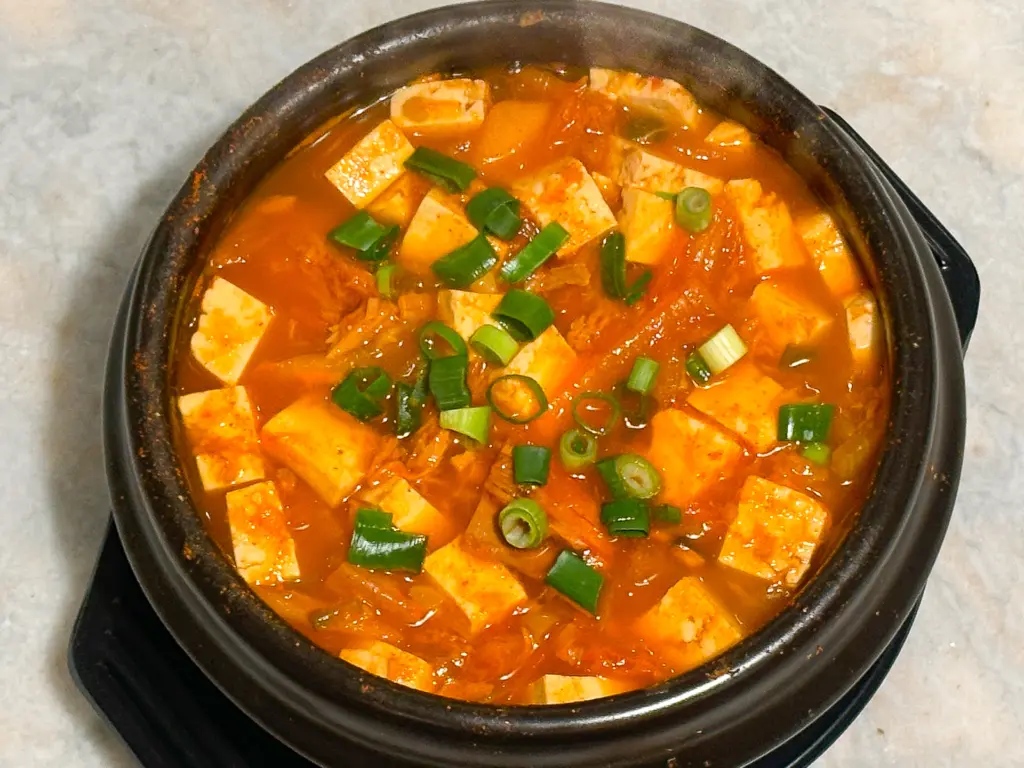


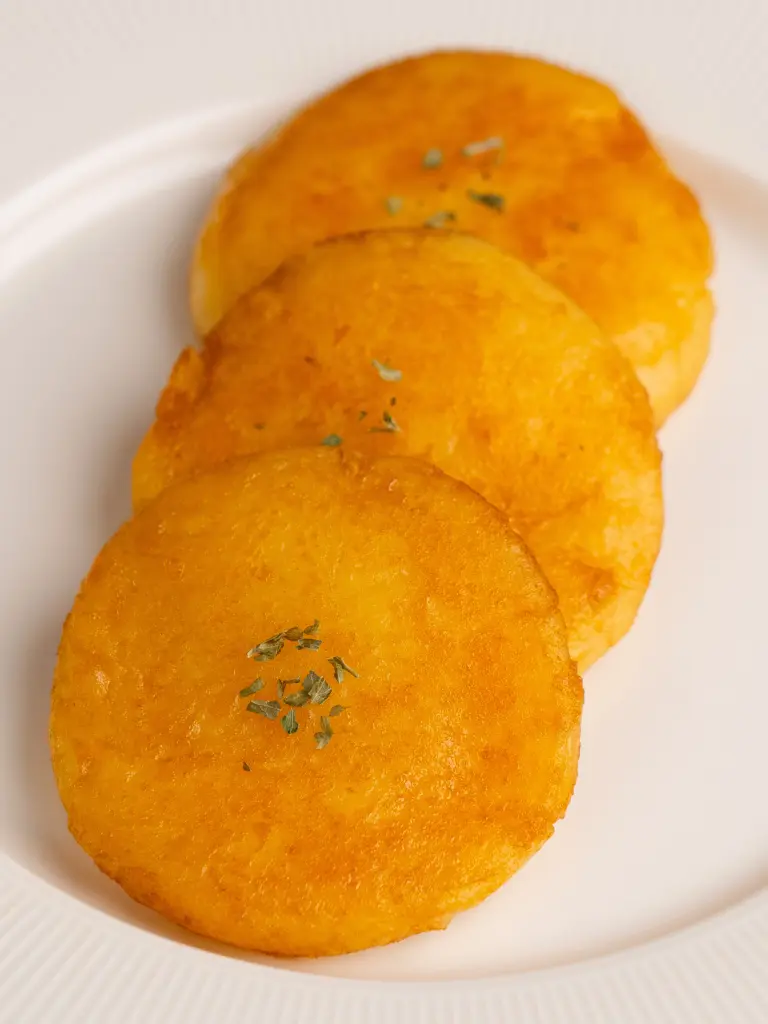
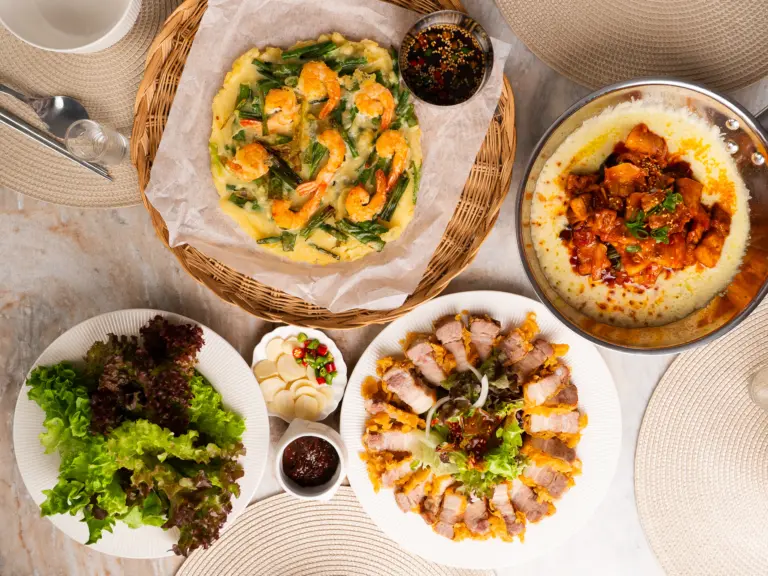
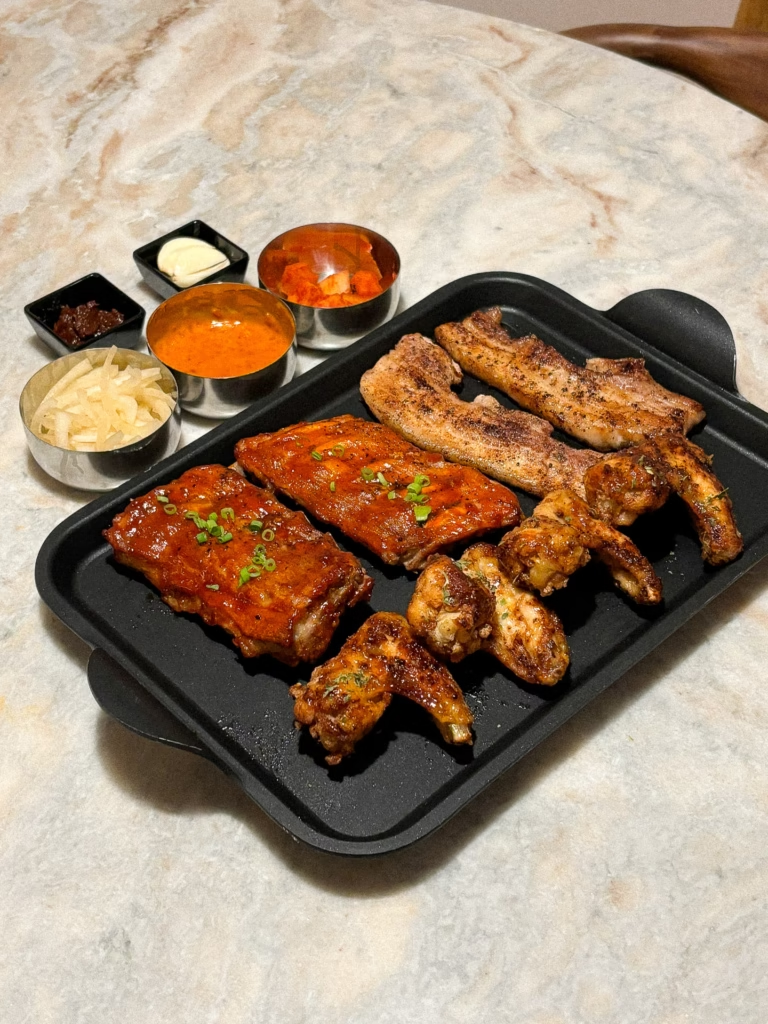
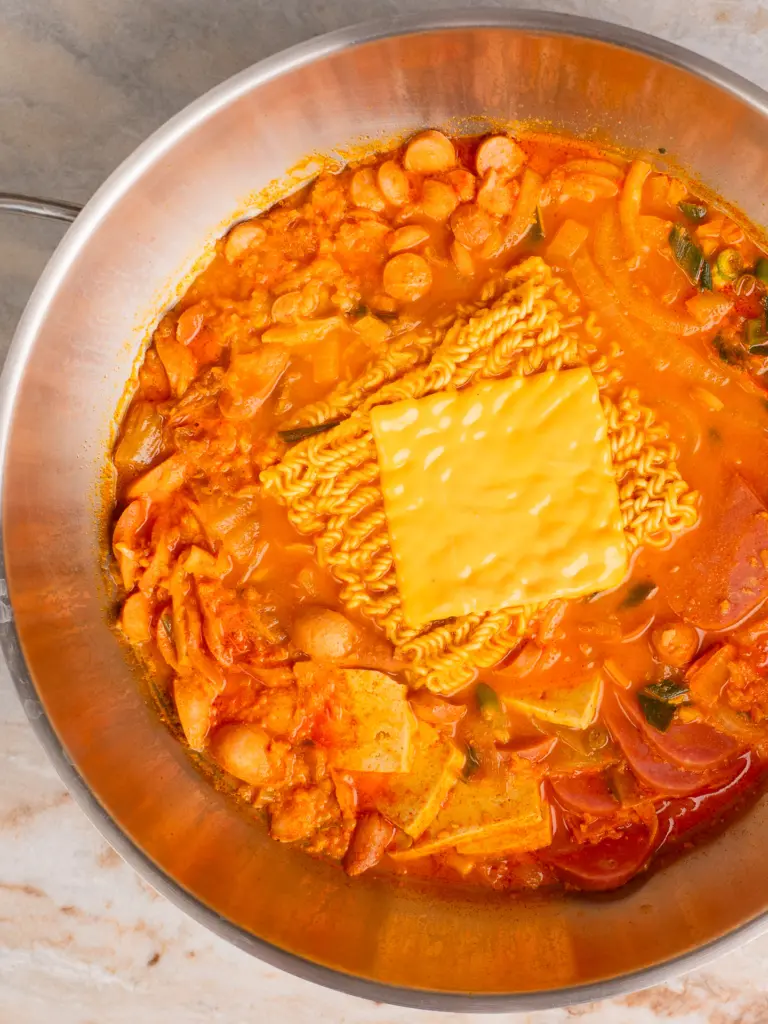
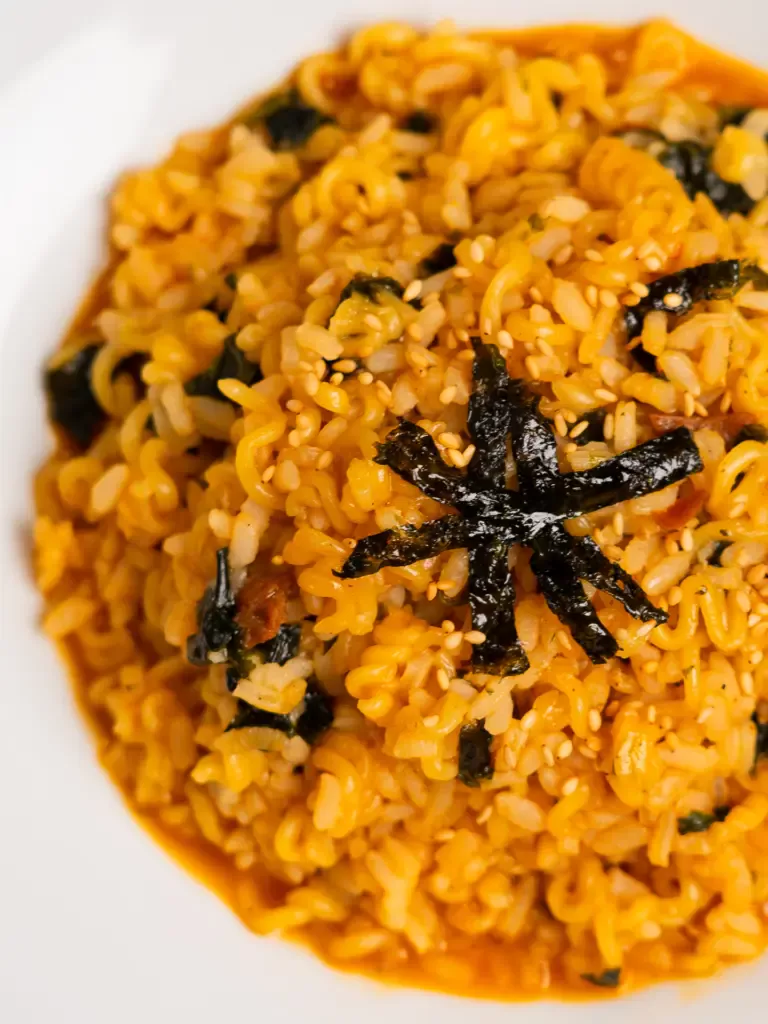
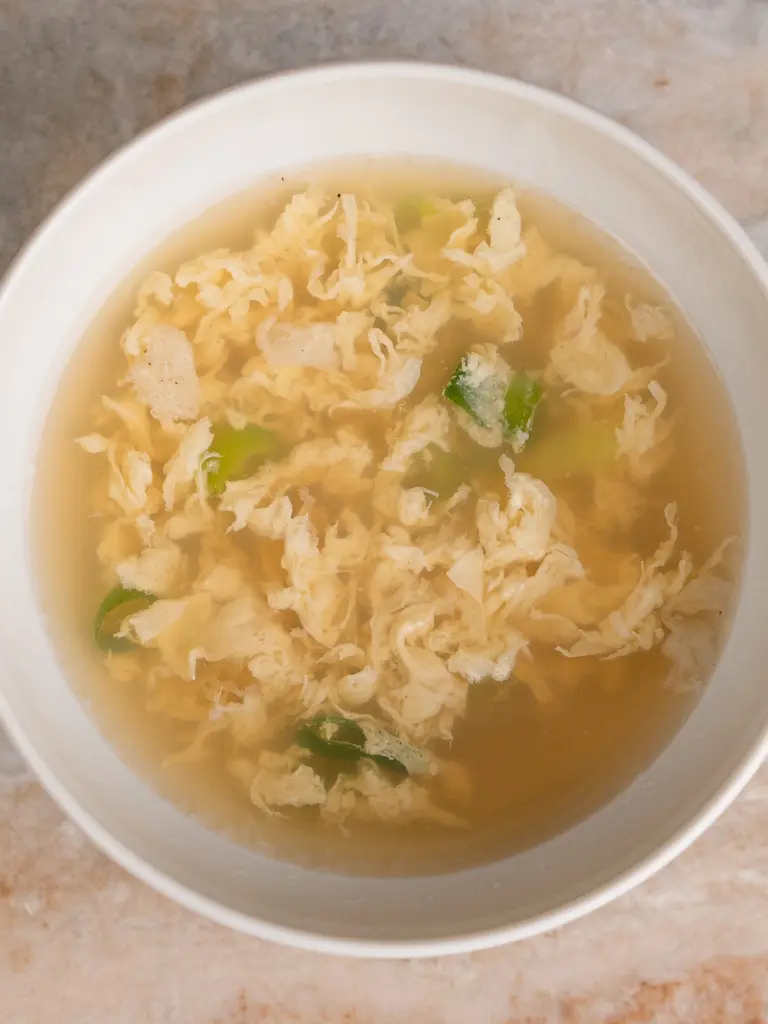
This sauce really made it like bibimbap I had during my trip to Korea, thank you so much!
Right?!! I’m so glad that you prove it!!
If someone hasn’t tried Bibimbap yet, I highly recommend it. It’s colorful, flavorful, and surprisingly filling. One bite and you’ll understand why it’s such a beloved dish in Korea.
I’m really happy that you are satisfied with this bibimbap recipe!! This is really authentic restaurant style dolsot bibimbap in Korea